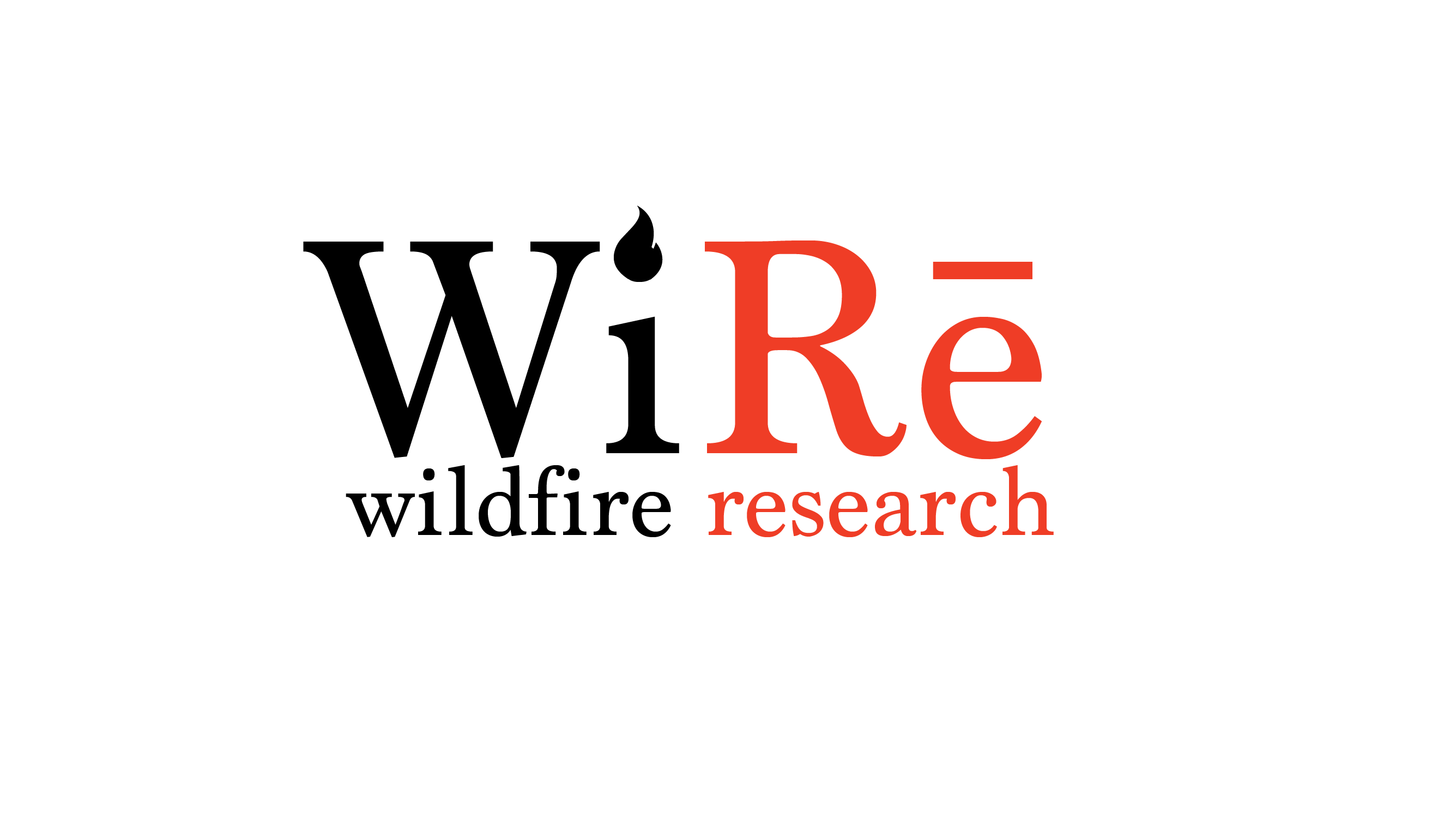What We Provide
At the core of our approach are two data collection efforts: rapid wildfire risk assessments and social surveys of the residents of the assessed parcels.
Take a look below at what we provide partners over the course of a WiRē project. Please note that our products are always evolving to address partner needs, the nuances of the data, and efforts to remain innovative in science communication.
RAPID ASSESSMENT
Rapid Assessment training materials and data collection tool
We train our community partners in each project to collect their own parcel-level wildfire risk data from the roadside using the WiRē Rapid Risk Assessment (WiRē RA). The WiRē RA consists of 13 attributes related to building materials, fuels near the home, background fuels and topography, and access to the property. We designed the WiRē RA so that a wildfire professional can quickly assess a property from the roadside. We provide our partners with the WiRē RA Scoring Guide, an Assessor Reference Guide to help assess each attribute, and training on how to collect data.
Rapid Assessment Summary
In the Rapid Assessment Summary document, we summarize WiRē Rapid Risk Assessment data collected within a project study area. This summary document provides partners with a quick look at results from their risk assessment efforts. For an example, please see the Rapid Assessment Summary from our project in Genesee, Colorado.
Parcel level maps
We visualize wildfire risk within a project study area by mapping WiRē Rapid Risk Assessment data. These Parcel Level Maps allow our community partners to more easily identify places within the study area assessed as having higher wildfire risk. Due to the specificity of this data, we do not share these maps publicly, although partners may choose to do so.
Scored Rapid Assessment dataset
We organize WiRē Rapid Risk Assessment data for each parcel within a project study area into a Scored Rapid Assessment Dataset. Partners can use this dataset to further investigate wildfire risk within their community. Due to the specificity of this data, we do not share project datasets publicly, although partners may choose to do so.
ArcGIS Online Rapid Assessment map
We organize WiRē Rapid Risk Assessment data for each parcel collected by our community partners into an ArcGIS Online Rapid Assessment map. Partners can use this geodatabase to further investigate wildfire risk within their community, from a spatial perspective. Due to the specificity of this data, we do not share project geodatabases publicly, although partners may choose to do so.
HOUSEHOLD SURVEY
Household Survey and correspondence materials
Over the past 10+ years of wildfire survey research, we have developed a Household Survey instrument to collect a range of social data related to how residents in the study area live with the risk of wildfire. Most of the survey questions are standardized across WiRē projects. However, some questions are tailored to address the interests of our community partners. We work with each community partner to develop the household survey, and we also provide related survey correspondence materials (e.g., cover letters, follow-up postcards) such that our survey efforts follow best practices for survey research.
Household Survey Summary
In the Household Survey Summary document, we summarize the household survey data from a project study area. Topics include wildfire risk perceptions, acceptability of community wildfire risk reduction strategies, wildfire risk communication preferences, and mitigation and preparedness activities. Survey responses are anonymized (i.e., not linked to a specific address). Our partners can use this summary document to learn more about the residents within the study area.
PAIRED DATA
Rapid Assessment/Household Survey comparison
In the Rapid Assessment – Household Survey Comparison document, we compare WiRē Rapid Risk Assessments and self-assessments of parcel-level wildfire risk collected on the household survey. Survey responses are anonymized (i.e., not linked to a specific address). This comparison document highlights differences in parcel-level wildfire risk perceptions between the two groups.
Paired Rapid Assessment/Household Survey dataset
The Paired Rapid Assessment – Household Survey Dataset contains all the data collected via WiRē Rapid Assessments and the household survey. It also provides information about parcels for which there is both WiRē Rapid Risk Assessment data and household survey data (“paired data”). Survey data are anonymized (i.e., not linked to a specific address). Partners can use this dataset to explore survey respondents’ perspectives on wildfire or to compare rapid assessment and household survey data. Due to the possible sensitivity of this data, we do not share this dataset publicly.
DATA SYNTHESIS
Tailored Outreach
WiRē collaborates with our community partners to design Tailored Outreach products that can be shared with important community audiences. For example, we have developed two-page mailers for study area residents, answering respondents’ key questions about wildfire risk mitigation and providing resources to encourage further action. In Chelan County, Washington, we designed a two-page handout with relevant research findings for local policymakers. In Santa Fe, New Mexico, we built a website describing findings and sent postcards to direct residents to the website. In Teton County, Wyoming, we gave tailored presentations to community organizations such as the Rotary Club.
See example documents below.
Lake Wenatchee Fire Rescue Outreach [PDF] »
Genesee Outreach [PDF] »
Outreach to Policy Makers [PDF] »
City of Santa Fe Outreach [PDF] »
City of Santa Fe Wildfire Risk Assessments [Website] »
Community Report (published report)
At the end of each WiRē project, we publish a Community Report through the U.S. Forest Service. Each report contains contextual information about the project, project findings, and all previously shared summary documents.
Presentations
Our Presentations are an opportunity to discuss project findings. We typically present the Rapid Assessment results first, followed by a synthesis presentation of the Rapid Assessment and Household Survey data. We also develop tailored presentations for specific audiences within our partner’s community (e.g., the Rotary Club or community wildfire ambassadors).
